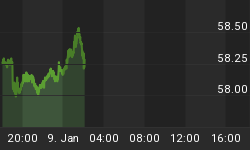Despite the resurgence of fears of another variant of COVID and rising case numbers, stay-at-home stocks are declining and companies benefiting from an economic reopening are trading above last year, signaling we just might be done with lockdowns in the U.S., even if Omicron becomes a bigger problem.
The S&P 500 index is up nearly 25% since the beginning of the year and nearly doubled from its March 2020 low.
Wall Street analysts are already offering a wide range of forecasts for 2022, with S&P 500 targets ranging from 4,400 to 5,300, compared to the current 4,600.
Even though things are improving compared to the beginning of the year, the risks for the next year include supply chain issues, labor shortages and current Omicron variant-or whichever comes after it.
According to the median prediction by several major banks’ analysts, the S&P 500 index will gain 7.5% by the end of 2022 to finish at 4,910, driven by earnings and economic growth
BMO Capital Markets has a target of 5,300 for the S&P 500 by the end of next year, a modest 15% gain from today. BMO’s more modest outlook is based on inflation concerns, but overall, the bank sees continued strong earnings for companies.
"The fundamental construct of the United States stock market is in wonderful condition. We have the best equity assets in the world, period," Brian Belski, BMO chief investment strategist, told Business Insider.
Goldman Sachs also sees the S&P 500 rising slightly next year, predicting 5,100 or a nearly 10% gain from the index’s current levels.
“While returns may not be as strong as in recent years, the equity bull market will continue as corporate profits help lift share prices,” Goldman said.
With the target of 4,600, Bank of America predicts a slightly negative year ahead, due to increased concerns about negative real interest rates, surging inflation and liquidity risks.
Wells Fargo is also cautious, expecting the S&P 500 to end 2022 at just 4,715. "Persistent supply shortages and inflation pressures lead us to adjust the magnitudes of some 2022 targets, but we believe the global economy should still mark an above-average pace next year, the bank said.
Morgan Stanley was decidedly more bearish, predicting a nearly 5% decline for the S&P 500 in 2022 at just 4,400. Slowing earnings growth and high valuations make companies look unattractive.
Sectors to watch next year include finance, energy, automotive–and possibly healthcare, though it has been underperforming rather unexpectedly–most of which also benefited during the lockdowns.
But be careful about the pandemic favorites such as Zoom, Peloton and Roku, whose stock rose by triple digits in 2020. They’ve seen rapid decline this year and are underperforming the rest of the market.
Shares of Peloton are down roughly 70% this year, while Roku is trading 40% lower compared to last year.
On the other side, many industries that were devastated during the pandemic, such as airlines, hotel companies and cruise lines, have all posted larger gains. Other economic segments tied to the economy reopening performed well, too.
What we’re looking for in 2022 is not just stocks that took advantage of the pandemic, but stocks that have learned and adapted and are now fundamentally resilient to another curve ball.

















